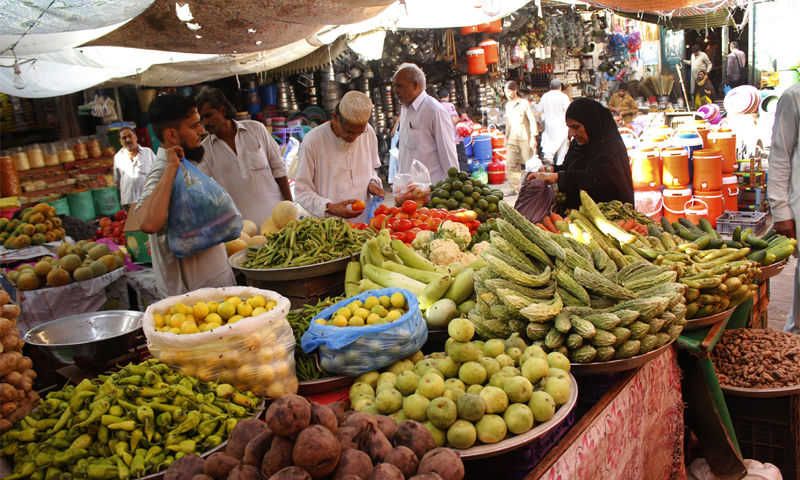ISLAMABAD: Inflation went up to nine per cent in September, from 8.2pc in August, on the back of a hefty jump in prices of food products, shows the data released by the Pakistan Bureau of Statistics (PBS) on Friday.
The new fiscal year started with 9.3pc inflation in July, which eased to 8.2pc in August. However, it rebounded in September mainly led by increase in prices of perishable products.
In September, wheat price surged by 5pc and wheat flour price by 3.14pc from the previous month. Similarly, prices of almost all pulses and vegetables also increased. In a related development, the government on Friday allowed import of 180,000 tonnes of wheat from the Russian government.
The average CPI between July and September eased from last year’s 10.08pc to 8.84pc this year, but the average CPI in FY20 rose to 10.74pc, from 6.8pc in the year before — highest level since 2011-12 when it stood at 11.01pc.
Food inflation is still in the double-digits, posting a rise in the outgoing month. In urban areas, it jumped by 12.4pc in September on a yearly basis and an increase of 3pc on a monthly basis, whereas the respective price level growth in rural areas stood at 15.8pc on a yearly basis and an increase of 3.8pc on a monthly basis.
In urban areas, food items that saw a jump in prices this month include tomatoes (44.07pc increase from August), vegetables (30.33pc), chicken (18.31pc), onions (14.51pc), potatoes (6.18pc), eggs (5.2pc), pulse gram (4.51pc), pulse moong (3.46pc), spices (3pc), pulse mash (2.76pc), pulse masoor (1.59pc) and milk fresh (1.16pc). The items whose prices declined in urban areas were fresh fruits (6.19pc), sugar (1.82pc) and gram whole (0.48pc).
In rural areas, price increase was seen in vegetables, higher by 45.18pc, tomatoes (30.33pc), onions (15.17pc), chicken (9.47pc), pulse moong (7.79pc), spices (5.63pc), wheat (5.03pc), pulse gram (4.64pc), gur (4.57pc), pulse mash (3.96pc), potatoes (3.36pc), wheat flour (3.14pc), eggs (5.2pc), rice (2.2pc) and fresh milk (1.16pc).
On the other hand, drag on price levels came from fruits (10.44pc), sugar (0.63pc), vegetable ghee (0.35pc) and pulse masoor (0.22pc).
Meanwhile, non-food inflation in urban centres was recorded at 5pc year-on-year and 0.2pc month-on-month basis, whereas in rural areas, it rose by 7.2pc and 0.3pc, respectively.
The urban consumer price index covers 35 cities and 356 items, while the rural one tracks 27 centres and 244 products. The former grew by 7.7pc year-on-year in September whereas the latter jumped by 11.1pc.
Core inflation in urban areas was 5.5pc in September as against 5.6pc the previous month. In rural areas, the corresponding increase was 7.8pc.
The central bank determines the key policy rate, currently at 7pc, based on the core inflation rate. The SBP has reduced the rate by a cumulative 625 basis points since March 17 to combat uncertainty amid the coronavirus pandemic.
Average inflation measured by the sensitive price index edged up to 12pc during September from 11.7pc during the previous month, while the wholesale price index rose from last month’s 3.3pc to 4.3pc this month.
Published in Dawn, October 3rd, 2020














































